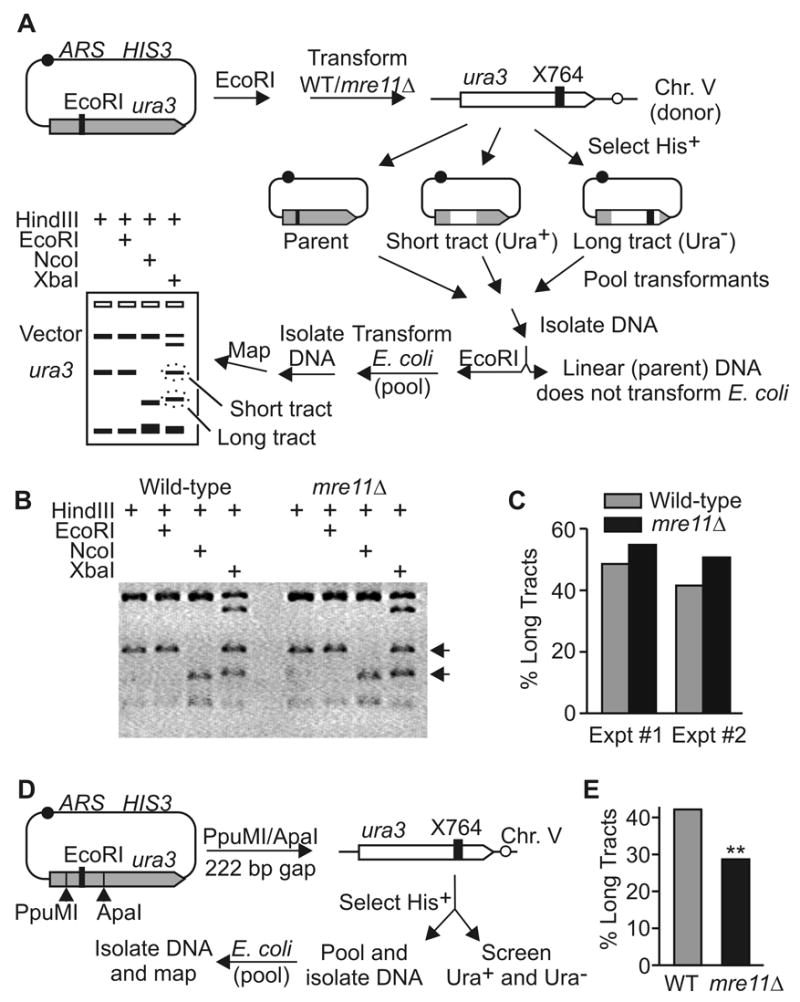Fig. 5.

Plasmid-chromosome HR. (A) HR between chromosome V and a linear, transformed plasmid carrying ura3 inactivated by an EcoRI linker in NcoI (position 432). Selected His+ transformants were pooled, and isolated genomic DNA was digested with EcoRI. This linearizes parental molecules, and only the circular gene conversion products efficiently transform E. coli. Ampicillin-resistant E. coli transformants were pooled and mapped to determine the ratio of long and short tract HR products. The first three lanes are controls: HindIII excises a 1.2 kbp ura3 fragment from the vector; smaller fragments result from HindIII sites in HIS3. The HindIII/EcoRI digest confirms that no parental molecules are present. The HindIII/NcoI digest confirms that all molecules arose by gene conversion (ura3 cleaved by NcoI). The HindIII/XbaI digest reveals the relative fractions of molecules with long or short tracts (ura3 cleaved by XbaI or not cleaved, respectively). (B) mre11Δ does not reduce plasmid-chromosome tract lengths. The fourth lane of each set (HindIII/XbaI) reveals similar fractions of long and short tract HR products. (C) Scanning densitometric analysis of agarose gels from two independent experiments (Expt #1 data are from gel shown in panel B). (D) Gap repair assay; symbols are described in panel A. (E) Percentage of long tracts among gap repair products, calculated as the ratio of Ura− recombinants per total recombinants (Ura+ + Ura−).
